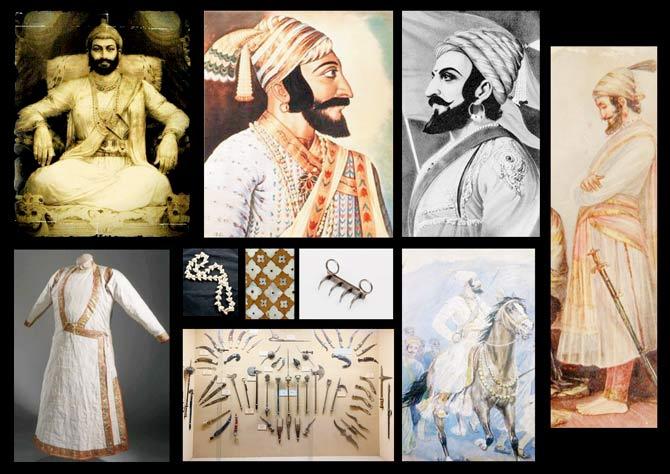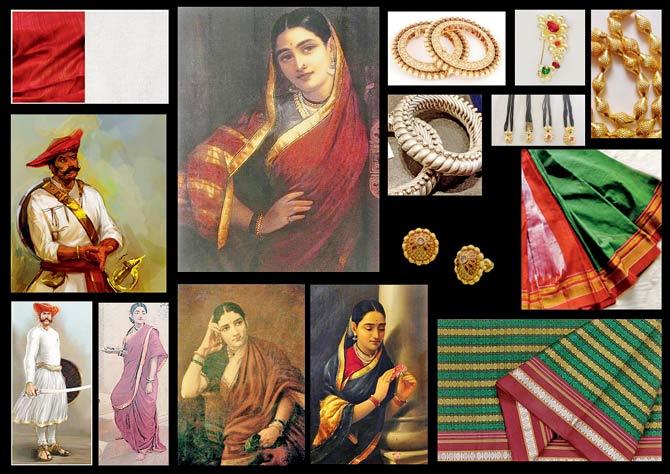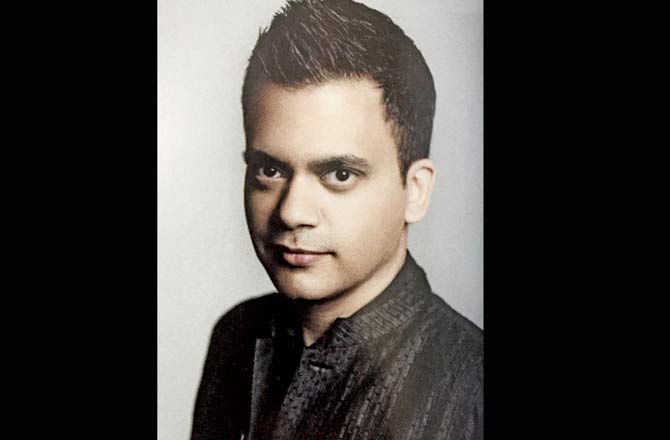For a state that prides itself on rich Maratha history, not a single museum documents costumes and armoury from the time. Fashion and costume designer Nachiket Barve on how he dressed the cast of Tanhaji in the absence of a detailed reference point

Shivaji's Moodboard
If there was any doubt that mainstream Indian schooling is unimaginative, it is confirmed when Nachiket Barve says he, like all students in Mumbai, learned Maratha history for several years but much of it was by rote. "We don't have a detailed archive for instance, of costumes and adornments at any of our museums. In schools, we are taught dates. And it's instilled in the students early on that the Mughals were invaders," he says. Fashion designer and costume maker, Barve, visited museums in Mumbai, Pune and Hyderabad but came back realising that the Maratha period's interesting costume history and exquisite handiwork with armoury has escaped documentation.
ADVERTISEMENT
Barve was researching for a project that has required him to imagine and craft costumes for the key cast in Ajay Devgn's upcoming historical, Tanhaji.
Set in the late 16th century, the film explores the life of Tanhaji Malusare, a trusted comrade of Chhatrapati Shivaji, who led the momentous battle for Kondana fort against the Mughals led by Udaybhan Rathod in 1670. The Marathas finally conquered the fort situated near Pune, but paid an irreversible price with Tanhaji's death. On hearing the news, Shivaji is believed to have famously said: "Gad ala, pan sinha gela (Got the fort but lost the lion)". The Kondana fort was renamed Sinhagad Fort as a tribute to the warrior.

"Unlike the Mughals or even the Rajputs, the Marathas were not known for elaborate costume or jewellery," Barve clarifies, calling them people of the soil. "They [Marathas] hailed from dagadancha desh [country of stones], and it's these earthy values that are reflected in their choice of textiles— coarse like kora and khadi in arid shades of ivory with solid colour-dyed blocking."
For a costume designer intent on recreating the past with authenticity, he was clear that he didn't wish to design an opulent spectacle. "We are so used to the formulaic Akbar-Birbal, OTT fancy-dress way of thinking. I wished to present the real people who dominated this epic period with clothing that carries a sense of austerity, a certain quietness," he adds.
Devgn plays Tanhaji, while Kajol portrays his wife Savitribai. Sharad Kelkar is Shivaji, and Saif Ali Khan plays Udaybhan Rathod, the Rajput fort keeper who eventually directs the Mughal army against the Marathas.

Savitribai's Moodboard
Barve has previously designed costumes for the Marathi films, Katyar Kaljat Ghusali, a 2015 musical, and Ani… Dr Kashinath Ghanekar, a biopic in 2018. His work on Tanhaji began a year and a half ago. A team of 3,000 has worked on this film, says the designer who attended several meetings with the research team that led to specific historians who could shed light on the times. It's not just the lead cast, but the entire film that Barve has overseen the look for. "The 70MM experience is different from the runway show that ends in a flash. Every little detail is enhanced tenfold since the film has been made in 3D too," he says. Barve chats with Sunday mid-day about putting together the look of the protagonists.
Tanhaji Malusare: There's very little information available on him and that allowed me room to play magpie with my imagination. He didn't come from a royal family, so, I imagined him wearing clothes that were rugged and stark. We've used hand-woven coarse khadi, kora and crushed cotton and jute for his off-duty attire of the bundi vest and dhoti. For the battle scenes, we made a pair of Aligarhi trousers and bundi jackets of vegetable-dyed leather. The colour of his pheta led to bit of debate since we had to go through a dozen shades of red to finally settle on the right one. A pagdi master was hired to drape and loop the pheta for each new scene. His footwear is an adaptation of the tooled leather Kolhapuri chappals, while his jewellery is minimal—hoop earrings, a talisman around his arm, taak or cuff bracelet around his wrist, and the tayeet locket.

Tanhaji malusare
Savitribai Malusare: She was not a queen but a sardar's wife, so we stayed away from embroidery. She wears nauvari Ilkal sarees sourced from Hubli and Belgaum, and brocade shallus for ceremonial occasions. The sarees went through seven pre-washes to give them a lived-in feel. We commissioned a 70-year-old saree draper from Mumbai and worked closely with a jewellery specialist from Kolhapur who owns the moulds that were used 400 years ago. Her jewellery varies from the traditional Kolhapuri saaj and putli haar for special occasions, to the long chakri vati mangalsutra, anklets, nose-ring, toe ring and patli gold bangles for everyday wear. Stick-on bindis didn't exist then, so, Mickey Contractor, Kajol's make-up artist, hand-drew large round bindis with the traditional dot and dash design.
Shivaji Maharaj: Google Shivaji Maharaj, look at history books or television shows, and you will find nothing less than highly stylised images. For the film, Om [director Om Raut], who has spent years researching Shivaji, helped bring a certain humanness to this larger-than-life personality. We used tonal jacquard, crushed and woven silk cotton overlay in Maheshwari fabrics with subtle metallic hints, and specially crafted poulaines (also known as pike or crackow shoes featuring an elongated, pointed toe worn in the late 15th century). Since he was the king, certain elements were exclusive to his wardrobe, including the chandrakor tikli (crescent moon) and conch necklace (instead of buying a readymade version, we got it handmade using twisted yarn), ornamental bugadi earrings, and a jiri top (headgear) fashioned from handwoven textiles with matt gold threads.

Nachiket Barve checks Saif Ali Khan's outfit on set
Udaybhan Rathod: He was a Rajput, who eventually joined the Mughals to take on Tanhaji and his mawalas (soldiers). My mood board borrowed from the dark midnight blues and browns of the sandstorm and desert, while metallic hints were added as he rose to prominence in the Mughal army. Since his character is an amalgamation of two cultures—Rajput and Mughal—it allowed for more sartorial provenance. We have used Banarasi cutwork, kota silks and zari work and dobby cottons for his garments and paired them with oxidised jewellery, while punched leather jutis from Rajasthan, and turn-up military boots were part of his footwear. Vikram Gaikwad, makeup artist for the male leads also used subtle cosmetic details including kajal.

Nachiket Barve
Catch up on all the latest Mumbai news, crime news, current affairs, and also a complete guide on Mumbai from food to things to do and events across the city here. Also download the new mid-day Android and iOS apps to get latest updates
 Subscribe today by clicking the link and stay updated with the latest news!" Click here!
Subscribe today by clicking the link and stay updated with the latest news!" Click here!






